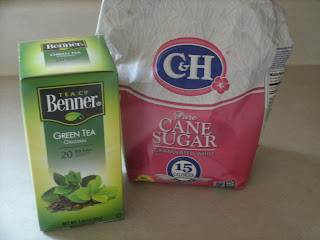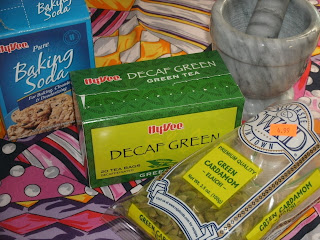Darjeeling
Today we are taking a detour to the foothills of the Himalayas to the Darjeeling region of India. Thanks to a recent tea order, I have a bag of first flush Darjeeling. It was the perfect time to order it because first flush teas are plucked in early spring - the first plucking of the season. I was also curious about the flavor, because the Darjeeling region has a unique interaction of plants and environment that produces tea with the distinctive flavor of the region. It is often described as the champagne of black teas.
My favorite tea shop describes 1st flush Darjeeling as follows: Teas from Darjeeling are reputed to have fresh, muscatel and flowery aromas. The term "First Flush" refers to the first plucking season of the year - March to April. Teas from the First Flush are greener, lighter and more flowery in taste compared to their later season relatives.
I found a little video about production of Darjeeling tea to share:
Withering, 18 hours of ambient air flowing through the leaves. 70% of weight is lost to evaporation. First flush black teas have a greenish blue tinge to them. Subsequent flushes lose that color.
This is a very delicate black tea in both color and flavor. It is quite delicious with floral notes that really come out with aeration. This is a fun tea to slurp because the flavor can change so much by doing that.
Since my first experience with Darjeeling tea was a bagged tea, I decided to dig through the cupboard to find a bag. My impression then was that it tasted like your basic black tea. I brewed up a cup per instructions. Even though the bagged tea steeped for less time (2 min instead of 3), it is much darker.
Granted, this bagged tea would contain later flushes which would be darker by nature of changes in the plant over the season. It would also be coming from lower grades of tea leaf. The first sip is a major change from what I was drinking before. This tea is much stronger. After a few more sips, I do notice the florals in this cup as well. I don't find any changes in character with aeration, but it does have a much stronger drag across the tongue. I think that this tea would stand up better to milk or sugar (the first video about the first flush Darjeeling talks about how the addition of milk or sugar ruins the flavor of this tea and makes it really bland). Unfortunately this comparison changes 2 variables, tea grade AND plucking season, but it demonstrates the differences that occur from changing those variables. Now that I've started off my morning with "champagne", on with the rest of the day.
My favorite tea shop describes 1st flush Darjeeling as follows: Teas from Darjeeling are reputed to have fresh, muscatel and flowery aromas. The term "First Flush" refers to the first plucking season of the year - March to April. Teas from the First Flush are greener, lighter and more flowery in taste compared to their later season relatives.
I found a little video about production of Darjeeling tea to share:
Withering, 18 hours of ambient air flowing through the leaves. 70% of weight is lost to evaporation. First flush black teas have a greenish blue tinge to them. Subsequent flushes lose that color.
 |
| Yes, this black tea definitely has that greenish blue coloring. It is a bit of a surprise considering black teas are usually dark brown/black looking. |
Next is rolling for 25 minutes to break the cells down.
Then the tea goes to the "fermentation" tables where the tea is oxidized. They use tables in this factory, but they used little wagons that they would hook up to a hose that would force hot air up through the leaves.
Finally the tea is dried and sorted.
This video also has a nice segment on tea tasting where you get to hear a professional aerating tea. From witnessing this skill myself at age 19, I'm still impressed by it. I'm working on my technique, and enjoying the flavor surprises that come with it.
The shop I bought this tea from has a video about going to India to procure the tea. I decided to check it out, and discovered they show the exact same factory as the one in the first video. So, after brewing up some tea, this is what the leaves looked like.
 |
| Again, these leaves do look very green for a black tea. |
Here's the final product. I hope India doesn't mind that I'm using my Turkish tea cup, but it really is the best cup I have to show off the color of this tea.
This is a very delicate black tea in both color and flavor. It is quite delicious with floral notes that really come out with aeration. This is a fun tea to slurp because the flavor can change so much by doing that.
Since my first experience with Darjeeling tea was a bagged tea, I decided to dig through the cupboard to find a bag. My impression then was that it tasted like your basic black tea. I brewed up a cup per instructions. Even though the bagged tea steeped for less time (2 min instead of 3), it is much darker.
 |
| Bagged Darjeeling tea |
Granted, this bagged tea would contain later flushes which would be darker by nature of changes in the plant over the season. It would also be coming from lower grades of tea leaf. The first sip is a major change from what I was drinking before. This tea is much stronger. After a few more sips, I do notice the florals in this cup as well. I don't find any changes in character with aeration, but it does have a much stronger drag across the tongue. I think that this tea would stand up better to milk or sugar (the first video about the first flush Darjeeling talks about how the addition of milk or sugar ruins the flavor of this tea and makes it really bland). Unfortunately this comparison changes 2 variables, tea grade AND plucking season, but it demonstrates the differences that occur from changing those variables. Now that I've started off my morning with "champagne", on with the rest of the day.




You really seem to like the technical information.
ReplyDeleteWell, I have toured a tea factory (half a lifetime ago now), and it is interesting to see how tea is made (even though I will never be processing it myself).
Delete